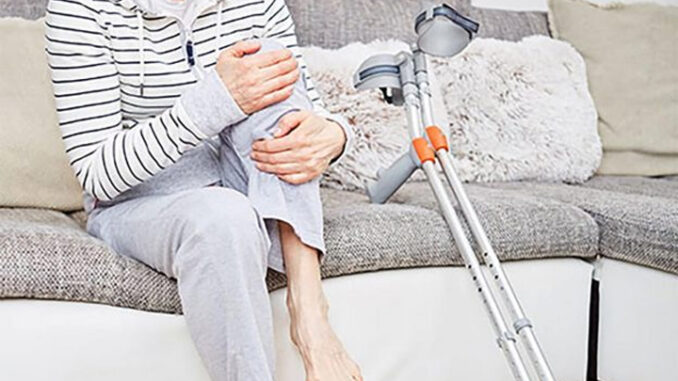
Introduction:
Maintaining a strong and healthy lower body is crucial for overall well-being, but individuals with bad knees often face challenges when it comes to finding suitable cardio exercises. The good news is that there are various low-impact and knee-friendly cardio exercises that not only strengthen leg muscles but also promote cardiovascular health without causing excessive strain on the knees. In this comprehensive guide, we will explore 15 cardio exercises tailored for individuals with bad knees, providing a diverse range of options to help build strength, endurance, and flexibility in the legs.
Chapter 1: The Importance of Cardio Exercise for Leg Strength
Cardiovascular exercise is essential for promoting heart health, improving circulation, and enhancing overall fitness. For individuals with bad knees, the focus shifts to low-impact exercises that minimize stress on the knee joints while still delivering the benefits of cardio exercise. Engaging in regular cardio workouts helps strengthen leg muscles, improve joint function, and contribute to a healthier, more active lifestyle.
Chapter 2: Consultation with a Healthcare Professional
Before starting any new exercise regimen, especially for individuals with existing knee issues, it’s crucial to consult with a healthcare professional or physical therapist. They can provide personalized recommendations, assess the severity of knee problems, and guide individuals toward exercises that are safe and beneficial for their specific condition.
Chapter 3: Low-Impact Cardio Exercises for Bad Knees
- Swimming: Swimming is a highly effective and low-impact cardio exercise that engages the entire body. The buoyancy of water reduces stress on the joints, making it an ideal choice for individuals with bad knees.
- Cycling: Stationary or recumbent cycling is gentle on the knees while providing an excellent cardiovascular workout. Adjust the resistance to control the intensity and focus on smooth, controlled pedaling.
- Elliptical Training: Elliptical machines offer a low-impact alternative to running. The elliptical motion minimizes impact on the knees while targeting various muscle groups, including the quadriceps, hamstrings, and calves.
- Rowing: Rowing machines provide a full-body workout that is easy on the knees. The controlled, fluid motion of rowing helps strengthen the legs and improve cardiovascular fitness.
- Water Aerobics: Water aerobics combines cardio exercise with the resistance of water. Classes are often designed to be joint-friendly and can be adapted to various fitness levels.
Chapter 4: Bodyweight Exercises for Leg Strength
- Walking: Brisk walking is a simple yet effective way to improve cardiovascular health and strengthen leg muscles. Choose supportive footwear and gradually increase the duration and pace of your walks.
- Seated Leg Lifts: While seated, lift one leg at a time, extending it straight in front of you. This exercise targets the quadriceps and can be performed without putting weight on the knees.
- Leg Press: Using a leg press machine at the gym or resistance bands at home, perform seated leg presses to target the quadriceps, hamstrings, and glutes with minimal stress on the knees.
- Step-Ups: Utilize a stable step or bench to perform controlled step-ups. This exercise engages the quadriceps and can be adapted to different heights and intensities.
Chapter 5: Modified Cardio Workouts for Bad Knees
- Chair Cardio Exercises: Seated cardio exercises, such as seated jumping jacks, leg lifts, and seated marches, provide a cardiovascular workout without putting strain on the knees.
- Recumbent Bike Workouts: Recumbent bikes provide a supportive seat and a reclined position, minimizing stress on the knees. Perform interval training or steady-state cardio on a recumbent bike for leg strengthening.
- Resistance Band Workouts: Incorporate resistance bands into your workout routine for added resistance without the impact. Exercises like leg extensions and seated leg curls can be performed with the assistance of resistance bands.
Chapter 6: Precautions and Tips for Safe Workouts
- Proper Warm-Up: Always start your workout with a proper warm-up to prepare the muscles and joints. Gentle stretching, joint mobilization, and light cardio activities help increase blood flow and reduce the risk of injury.
- Gradual Progression: Progress gradually and listen to your body. Increase the intensity, duration, or resistance of your workouts slowly over time to allow your muscles and joints to adapt.
- Quality Footwear: Invest in supportive and well-cushioned footwear to provide stability and reduce impact on the knees. Proper shoes can make a significant difference in maintaining joint health during cardio exercises.
Conclusion:
Strengthening leg muscles with bad knees is not only possible but crucial for maintaining overall health and mobility. By incorporating the recommended cardio exercises into your fitness routine, you can improve cardiovascular fitness, enhance leg strength, and foster a more active lifestyle. Remember to prioritize safety, consult with healthcare professionals as needed, and enjoy the benefits of a tailored cardio workout that supports both heart health and knee well-being. As with any exercise program, consistency and a gradual approach are key to achieving lasting results while minimizing the risk of injury.